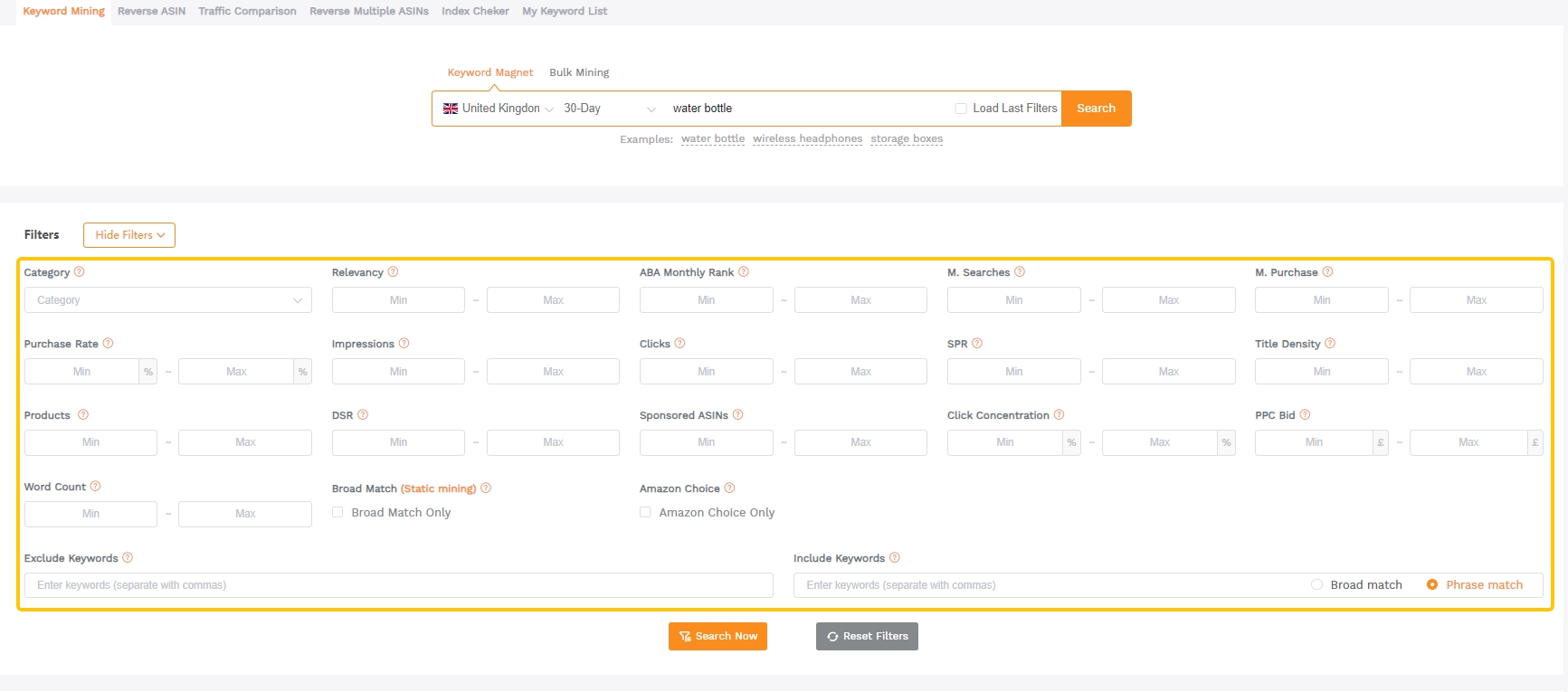Amazon Pay-Per-Click (PPC) advertising is a powerful tool that allows sellers to gain visibility, drive traffic, and increase sales. However, the success of your PPC campaigns largely depends on the keywords you choose to target. This comprehensive guide will walk you through the key strategies for finding winning keywords that maximize your returns while minimizing your ad spend. Whether you’re a seasoned seller or new to Amazon PPC, this blog will provide actionable insights into optimizing your keyword strategy for 2024.
Understanding the Difference Between Organic and PPC Keywords
Before diving into keyword research, it’s crucial to distinguish between organic and PPC keywords. Organic keywords are the terms and phrases that drive free, natural traffic to your product listings based on relevance and ranking in Amazon’s search results. These keywords are typically integrated into your product titles, bullet points, descriptions, and backend search terms.
On the other hand, PPC keywords are the terms you bid on in your Amazon advertising campaigns. When a customer searches for these keywords, your sponsored listing appears, often at the top of the search results. The key difference is that while organic traffic is free, PPC traffic is paid, meaning you are charged each time a customer clicks on your ad.
Why Distinction Matters
Understanding this distinction helps you develop a balanced strategy. While organic keywords are essential for long-term ranking, PPC keywords offer immediate visibility and can significantly boost sales when used correctly. By strategically targeting both types of keywords, you can achieve sustainable growth and amplify your overall sales performance.
How to Conduct Keyword Research for Amazon PPC
Keyword research is the cornerstone of successful Amazon PPC campaigns. Finding the right keywords requires a mix of understanding buyer behavior, analyzing competitors, and leveraging data-driven tools like SellerSprite. Below are the essential steps to conduct effective keyword research for your PPC campaigns.
1. Start with Broad Keyword Research
Begin your research by identifying a broad set of keywords related to your product. These can include generic terms, brand names, and category-specific keywords. SellerSprite’s keyword research feature allows you to input seed keywords and generate a list of relevant suggestions along with search volume, competition levels, and trends.
2. Refine Your List with Long-Tail Keywords
Long-tail keywords are phrases that are more specific and often contain three or more words. These keywords tend to have lower search volume but higher conversion rates because they capture more targeted search intent. For example, instead of targeting “coffee mug,” a long-tail keyword might be “ceramic coffee mug with handle.” Using SellerSprite, you can filter and prioritize long-tail keywords that align with your product and buyer persona.
3. Analyze Competitors’ Keywords
Understanding what keywords your competitors are targeting can give you an edge in optimizing your PPC campaigns. SellerSprite allows you to perform competitor analysis by reverse-engineering their listings and identifying the keywords they’re ranking for. By uncovering keyword gaps or opportunities, you can tailor your campaigns to outbid or target less competitive keywords.
4. Group and Organize Your Keywords
After compiling a list of relevant keywords, organize them into thematic groups based on their relevance and performance potential. This can include grouping them by product features, benefits, or variations. Well-organized keyword groups allow for better targeting and optimization in your ad campaigns.
SellerSprite's keywords-related tools provide a wide range of filters to help you find better keywords.

Using Negative Keywords to Optimize Your Ad Spend
One of the most critical aspects of Amazon PPC keyword research is knowing what keywords not to target. Negative keywords are terms that prevent your ad from showing up for irrelevant or low-converting searches. By adding negative keywords to your campaigns, you can filter out unqualified traffic, ensuring that your budget is spent only on clicks that are likely to convert.
How to Identify Negative Keywords
To identify negative keywords, review your search term reports and look for terms that generate clicks but result in little to no sales. For example, if you sell premium coffee mugs, the keyword “cheap coffee mugs” might generate traffic but not convert, making it a good candidate for your negative keyword list.
Benefits of Using Negative Keywords
- Reduced Wasted Ad Spend: By filtering out irrelevant searches, you lower the chances of wasting your budget on non-converting clicks.
- Improved Click-Through Rate (CTR): Your ad will be shown to more qualified buyers, leading to a higher CTR.
- Higher Return on Ad Spend (ROAS): Targeting only relevant searches results in better conversion rates and a higher ROAS.
The Role of Search Intent in PPC Campaigns
Search intent is the purpose behind a customer’s search query. Understanding the intent behind the keywords you’re targeting is crucial for optimizing your PPC campaigns. In general, search intent can be divided into four categories:
- Informational: The customer is looking for information or answers. Example: “how to use a French press.”
- Navigational: The customer is searching for a specific brand or product. Example: “Starbucks coffee.”
- Transactional: The customer is ready to buy and is searching for specific products. Example: “buy stainless steel coffee mug.”
- Commercial Investigation: The customer is comparing products and looking for the best option. Example: “best ceramic coffee mug for office use.”
Aligning Your Keywords with Buyer Intent
For Amazon PPC, transactional and commercial investigation keywords typically have the highest conversion rates. When selecting keywords, prioritize those that align with purchase intent. For instance, if your product is a high-end coffee maker, target keywords like “best coffee maker for home use” or “buy premium coffee maker.”
Tracking and Analyzing PPC Keyword Performance
The effectiveness of your Amazon PPC campaigns hinges on continuous monitoring and optimization. Regularly tracking your keyword performance allows you to adjust bids, refine targeting, and eliminate underperforming keywords. Here’s how to approach performance analysis:
1. Monitor Key Metrics:
Track essential metrics such as:
- Impressions: How often your ad is displayed.
- Click-Through Rate (CTR): The percentage of clicks your ad receives relative to the number of impressions.
- Conversion Rate: The percentage of clicks that result in a sale.
- Advertising Cost of Sales (ACoS): The percentage of ad spend relative to sales generated.
2. Adjust Bids Based on Performance:
Based on the data you gather, you can increase bids for high-converting keywords to maximize visibility or reduce bids for low-performing ones to conserve your budget.
3. Refine and Expand Your Keyword List:
Over time, you may discover new profitable keywords or identify additional negative keywords. Continuously refining and expanding your keyword list ensures that your campaigns remain competitive.
4. Use A/B Testing:
Test different keyword strategies, ad copy variations, and bid amounts to determine what works best for your products. SellerSprite’s keyword tracking feature allows you to monitor changes and performance trends, enabling data-driven decision-making.
Conclusion
Mastering Amazon PPC keyword research is essential for driving profitable campaigns and growing your business. By understanding the difference between organic and PPC keywords, conducting thorough keyword research, leveraging negative keywords, and aligning your strategy with buyer intent, you can achieve better visibility, higher conversion rates, and optimized ad spend. Tools like SellerSprite simplify the process, offering data-driven insights that empower you to make informed decisions and continuously improve your campaigns. As you move forward in 2024, refining your keyword strategy will be key to staying ahead in the competitive Amazon marketplace.


User Comments